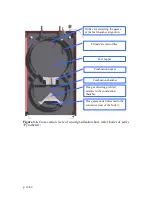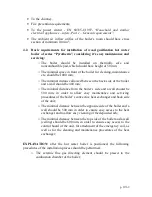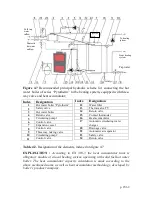
p. 12/69
3.
Description of the wood gasification hot water boiler
of series “Pyrotherm
”.
The heat exchanger of the hot water boiler of series “Pyrotherm” complies
with the acting requirements for such kind of units, defined in operating norm :
EN 303-5/2000 – „Heating boilers for solid fuels, hand and automatically fired,
nominal heat output up to 300 kW. Terminology, requirements, testing and
marking”.
The hot water boiler consists of the following elements/modules:
•
Heat exchanger is steel plate welded construction. In the upper section of
the boiler is the fuel hopper, which is manually fed with wood logs. This
fuel chamber makes optimal conditions for fuel pyrolisis process and the
volatile gases are directed to the lower section of the boiler, where they
are oxidized in the combustion chamber. In the combustion chamber is
positioned ceramic lining – a nozzle and a flue gas directing element,
which allow efficient combustion process;
•
Combustion nozzle, produced from ceramic material, placed in the lower
section of the fuel hopper, which ensures optimal conditions for efficient
combustion process;
•
Ceramic directing element, which is positioned in the combustion
chamber of the boiler, allowing high temperature levels and ensures
optimal fuel oxidation;
•
Flue gases fan is installed in the back side of the boiler – it transports the
exhausted flue gases out of the boiler and controls the operation of the
boiler;
•
Air distribution box, which has primary air control valve. This box also
serves as heat exchanger and preheats the ambient air before being
consumed in the combustion chamber of the boiler. The inlet of this box
has inflow control flap, which is driven by thermovalve and controls the
total mass flow rate of the air, sucked in the boiler;
•
Inflow orifice has internal thread (for the size see table 2.2) and is
positioned on the back left lower side of the heat exchanger, the outflow
orifice has internal thread as well (for the size see table 2.2) and is
positioned in the back left upper side of the boiler. Use this orifices in
order to connect the boiler to the heating system;
•
Drainage orifice has internal thread (for the size see table 2.2), which
should be connected to a drainage valve;













































